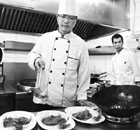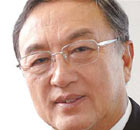Society
C-section rates highest in China, reasons mixed
By Hou Lei (chinadaily.com.cn)
Updated: 2010-05-11 17:32
 |
Large Medium Small |
Doctor recommendations as well as some pregnant women's reluctant attitude towards natural birth are regarded as important factors behind China's high cesarean sections rate, a report from the Beijing-based magazine China Economic Weekly showed.
A survey by the World Health Organization (WHO) revealed earlier this year said nearly half of all births in China are delivered by cesarean section, the world's highest rate, while the recommended level is no more than 15%.
| ||||
The WHO study found that women undergoing C-sections that are not medically necessary are more likely to die or be admitted into intensive care units, require blood transfusions or encounter complications that lead to hysterectomies, according to an earlier report of the Associated Press.
AP also said US studies have shown babies born by cesarean have a greater chance for respiratory problems.
Reasons for elective C-sections are not simple but mixed in China, as in many cases hospitals and expectant mothers have different considerations when they have to make a decision between vaginal birth and C-sections.
Financial incentives do motivate some hospitals to perform C-sections, and some doctors recommend surgery to women for this reason.
"If all expectant mothers choose natural birth, we will go broke," Dr Guo from a town-level hospital in Henan province told China Economic Weekly.
Guo said prices for natural birth and C-section are about 500 yuan ($73) and 1,000 yuan ($146) respectively in the hospital he works for. All the wages of doctors and nurses in his department are directly proportional to the whole department's income.
The price differentiation also exists in large cities. In Guangzhou, the price for natural birth in top level hospitals is about 3,000 yuan ($440) and for C-section is at least 6,000-7,000 yuan ($880 to 1026), according to a report by Xinhua News Agency.
"Besides, C-sections also mean the greater use of medial equipment and medicines, which means more income to hospital and sometimes more 'off-the-books income' to some doctors," Dr. Gao Ling from Beijing Amcare Women's and Children's Hospital told China Economic Weekly.
Some doctors also pointed out the price of natural delivery in public hospital set by government is indeed so low that it could not even recover the costs of performing it, the magazine said.
Avoiding medical disputes is also an important reason that drives doctors to recommend C-sections.
Natural birth costs much more time and involves more medical workers than C-sections, and doctors have to stay alert and concentrating for hours at a time, ready to deal with any accident.
On the other hand, a C-section usually takes only one hour and is more controllable for doctors, which means lower possibility of accidents and therefore fewer medical disputes.
As for those expectant mothers, many of them are reluctant to suffer the pain of a natural birth and believe it is easier to regain their figure after a C-section than after a natural birth.
"Half of C-sections are performed at the demand of expectant mothers," a doctor who did not give his name told China Economic Weekly.
In addition, there are also some women who opt for surgery to choose a "lucky" delivery date or year.
The magazine said the C-section rate from the 1950s to 1970s was only 5% in China. It rose dramatically from 30% to 40% in 1980s and has ranged from 40% to 60% since the 1990s.
The C-section rates in many other countries are also higher than the recommended level. For instance, 31% of US births are C-sections while the number in many Asian countries and Latin America also exceed 25%.











